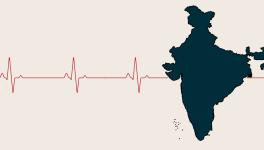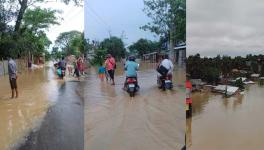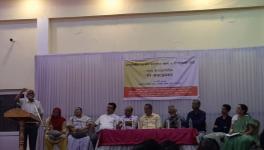In South West Assam, Healthcare Services are a far cry - II
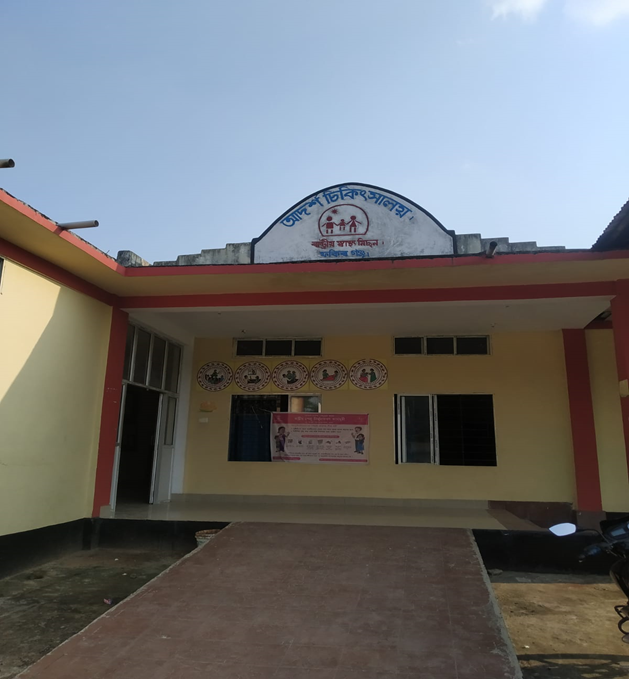
The Fakirganj Model Hospital
The sprawling fences along the Indo-Bangladesh border in Mankachar mark the end of India. Returning back from this place towards Guwahati, the capital of Assam, offers bountiful experiences, both bad and good. The good is the beauty of the landscape one travels through along the Assam-Meghalaya border, and the bad is the horrific road condition. En route, there is Fakirganj in Dhubri district. Fakirganj has its own history of losing lands and homes due to flood and erosions caused by the mighty Brahmaputra river.
Travelling through the bumpy and narrow roads of Fakirganj gives an idea of the geography of the place, made complex by continuous erosions and changing character of the Brahmaputra, forcing people shift houses frequently. A part of old Fakirganj, according to locals, does not exist anymore as it had disappeared into the river.
This is a story of Fakirganj, Dibrugarh, Palasbari and many other towns and villages of Assam that have vanished into rivers.
Fakirganj is no different from South Salmara - Mankachar, in terms of healthcare services. Deviating from the Hatsingimari-Goalpara-Guwahati main road to reach the middle of Fakirganj, we travelled more than 30 kilometres but could not see a single clinic, dispensary or hospital, either government or private. After great difficulty, we managed to reach the Fakirganj model hospital.
It was around 2.30 p.m and the hospital was almost empty. The doctors had already left and a few ASHA (Accredited Social Health Activists) workers were busy checking their duty schedule. Three teachers have been temporarily appointed to keep the track of vaccination in the area, we were told.
“The doctors’ residences are just adjacent to the hospital and they usually arrive if there is urgency,” a person told us.
On hearing about the arrival of a media team, Dr Jahidul Alam rushed to the hospital. He gave NewsClick some information on the status of doctors, but said since he was a new appointee, he couldn’t give more detailed information on the measures taken during the peak of COVID-19.
Alam, who has just completed his MBBS, has been appointed at Fakirganj under the mandatory rural appointment rule of the government, which is for a fixed tenure. When asked how many doctors were there in the model hospital, he said: “We are three of us here as of now. All of us are under the mandatory rural service rule. One amongst us has recently got appointed in a different place but has not left the hospital yet. Apart from us, there is a permanent doctor, Dr Rabibul, who is in charge of the model hospital.”
We tried to meet Dr Rabiul but he was not available at that time.
The Fakirganj hospital was earlier a mini PHC (Primary Health Centre) which has been upgraded to a ‘model hospital’ recently. However, “the hospital premise is not out of danger of floodss and erosion”, said Jiyadur Rehman, a local resident.
“Due to the possibility of erosion and floods, the hospital has been not constructed as a multi-storey building. This area changes its shape owing to erosion and changing streams of the river. My relatives have now gone to the other bank of the river, whereas we used to live as neighbours, all due to erosion”, Jiyadur said.
Asked for more details on the status of health services in the area, Dr Jahidul said serious patients cannot be given adequate treatment here. “We have to transfer them to Goalpara, Dhubri or Guwahati”, he said. About how these ‘serious patients’ are transferred since not a single ambulance could be spotted anywhere near the hospital, he said the Airkata RPHC (Revenue PHC) has an ambulance that is used in emergencies.
The Airkata RPHC is not very far from the model hospital, but reaching there takes a lot of time due to the poor road condition. In case of a medical emergency, reaching even Goalpara is a highly challenging affair. How people cope with medical emergency cases there is beyond imagination.
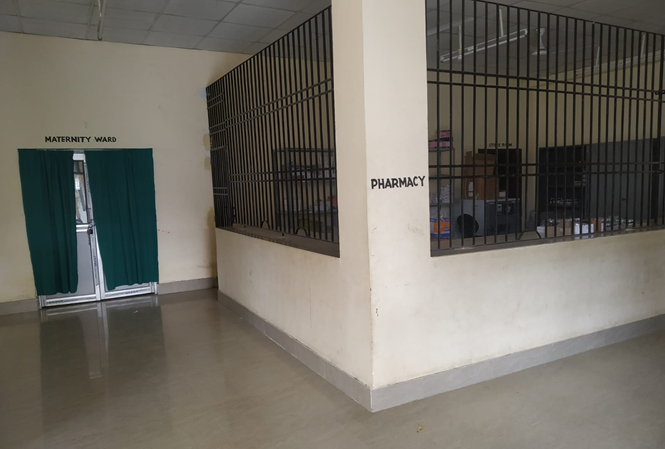
Empty spaces: Inside Fakirganj Model Hospital
On the status of infrastructure, Alam said: “There is no emergency ward as such, but there is a room where all the emergency cases are brought in and we try our best to offer whatever treatment is possible. The model hospital has a maternity ward but operations cannot be conducted as such. Ultimately, we have to send the patients outside Fakirganj.”
He said the hospital had one oxygen cylinder as of now.
An ASHA worker present in the hospital told NewsClick on the condition of anonymity that the “the hospital has many advanced equipment, but these cannot be operated as there is no trained personnel present currently.”
About the measures taken during the COVID-19 peak, she said: “A few people got infected and were isolated as per government rules. Medicines were provided in the hospital.” When asked about the number of COVID deaths, she said she did not have the “exact count.”
In the absence of good hospitals and inadequacy of doctors and specialists, the locals prefer to go to Goalpara. One name that was taken by many of them was Solace Hospital in Goalpara.
There is government provision of boat ambulances and boat clinics, but locals said these were of no use in case of medical emergencies .The boat (ferry) has to go to Dhubri, which is about a two-hour journey. In winter, the travel time increases. Moreover, locals denied having availed the facilities of either the boat ambulance or boat clinic.
A bit further from the hospital, there is a bazaar area near the Fakirganj police station. It has only a few pharmacies, which too appeared inadequately stocked. When government-aided health infrastructure is minimal, the dearth of an initiative by private enterprises is puzzling.
Sorhab Ali Chowdhury, who teaches history at the Hamidabad College in Fakirganj, said the situation was intricately related to the fragile geography of the area. “This is an erosion-prone area. Nobody knows which direction the river will cause the erosion and who will have to lose his land and property into the streams of the mighty Brahmaputra. This uncertainty makes any investor scared to start big hospitals. The roads also have to bear the brunt of the river’s fury, as many get swept away.”
On other social aspects, Chowdhury said: “Apart from health, the area is also extremely backward in terms of education. A good section of the population is migrant labourers, who had to suffer the most during prolonged restraining measures like lockdowns during the pandemic.”
GOALPARA DISTRICT
Going toward Goalpara is once again a choppy ride for quite some distance until the smooth patches can be seen Lakhipur onward. Goalpara is sort of a centre for southwest Assam at the south bank of Brahmaputra, for education and health.
People from the districts of Dhubri (especially parts of the south bank), South Salmara and even Barpeta rely on the health services in Goalpara. However, the popular hospitals here too are centred around urban areas and are mainly in private hands.
The usual scenario of health services in Assam is dominated by mushrooming private hospitals in urban spaces, outnumbering government establishments, while rural areas have very few private and government medical facilities.
The website representing the district administration of Goalpara says that the district hospital (civil hospital) here is a 200-bedded one, and there are a total of five PHCs in the district. Interestingly, the district has six state dispensaries (SD) which are like mini PHCs and each of the SDs caters to about 20,000-25,000 people. However, the SDs don’t have advanced medical facilities, and patients only get basic treatment there. Eventually, people have to depend upon the district hospital and the private ones.
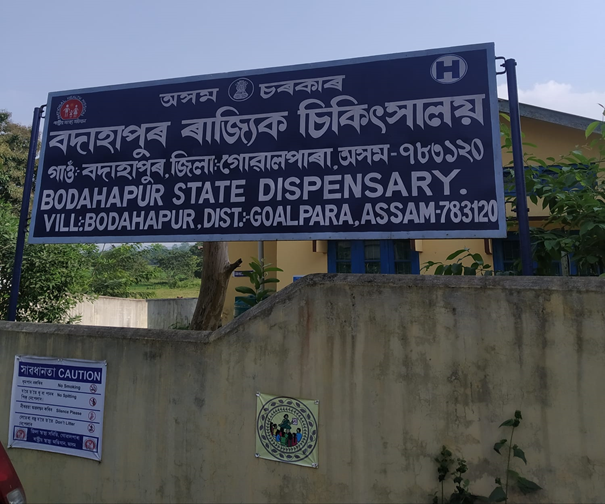
The Bodahapur State Dispensary, Goalpara
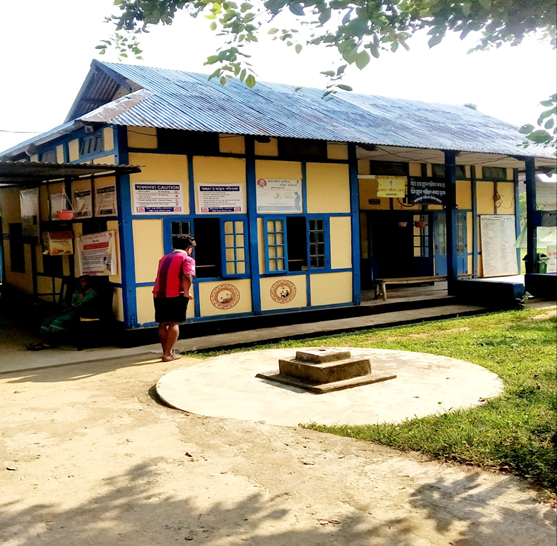
Inside the Bodahapur SD.
On COVID challenges, Dr PK Bharali, an MBBS and currently the DIO (District Immunisation Officer) of Goalpara, told NewsClick that the Goalpara civil hospital had an ICU of six beds. “During the COVID peak of both first and second waves, patients were treated or isolated as per government norms. We did not have to face acute shortage of oxygen here,” he added
Bharali said there were some serious patients who had to be shifted to Guwahati during COVID peak. Travelling to Guwahati from Goalpara town takes around three hours, however, the road conditions are not as pathetic as in South Salmara and Fakirganj. “Moreover, the presence of many private hospitals here could release some pressure during the peak, those who could afford chose to get admitted in some of them,” he added.
Goalpara also comprises numerous chars (sandbars) and riverine areas, some of which are extremely remote, where motorised ferries (boats) are the only means of reaching. In such a scenario, government facilities of boat clinics and boat ambulances could have been used in cases of emergency. Bharali told NewsClick that there is a provision of one boat clinic, which visits some remote chars on a regular basis for immunisation and health monitoring as well.
On being asked whether this boat clinic was used during COVID peak and how many serious patients were saved, he said he did not have details.
The in-charge of the Bodahapur SD told NewsClick they had to face only a few serious cases from the nearby villages that the SD looks after. They had nothing much to do but arrange for quick transfer of such patients to the civil hospital.
Goalpara has Meghalaya on one side and Brahmaputra river on the other; in between lies the main town and several other important places like Dudhnoi, Krishnai, Paikan etc. The villages on the Meghalaya side are connected by motorable roads but some of these are remote and difficult to reach.
However, the char areas are more difficult to reach. Motorboats are the only option for daily commuters, which can be really dangerous in times of heavy rains and storms. Moreover, there re also small boats that carry people, bikes and heavily loaded stuff, which is also very dangerous.

A motorable boat for daily commuters to and fro the Char areas.
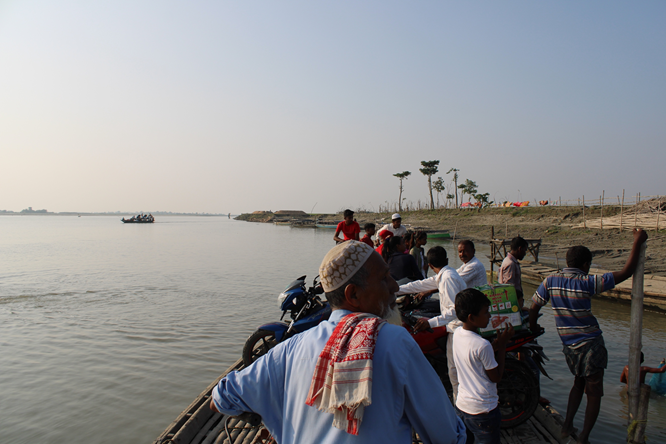
People, bikes and luggage travel on a boat over the Brahmaputra.
The Basantapur char could be reached by such a motorboat and from near Dolgoma, which is one of the ghats (sort of ferry terminal) for the boats, but it took around half an hour.
A char like Basantapur and many others in Assam are actually the litmus test of healthcare services, pandemic or not. The almost zero presence of health infrastructure in such areas poses a serious question on how far equitable healthcare services have reached in a country like India.
Amir Hussain, a resident of Basantapur and a teacher in Matia Refugee Middle English School told NewsClick that “there is only one sub-centre PHC at the char which has to look after around 15,000 people.”
The sub-centre PHC appeared to be the only medical set-up in Basantapur. Locals complained that the sub-centre PHC was often locked, the nurses did not turn up regularly, and forget about the doctors. In the case of vaccination, too, the villagers faced gross irregularities. Before the day of vaccination, the health authorities would come and declare the time, but this is done in an irregular manner, the villagers told NewsClick.
Abdul Barek, who was born in the char and currently lives at Matia (the other side of the river) lamented: “The chars are historically neglected. We have a school here, established in the late 19th century by our ancestors. But, there is no improvement either in health or in education. Even the pandemic, which shook the world to the core, could not fetch much attention to the chars.”
At Basantapur, an NGO named Village Development Organisation (VDO) is the single organised set-up that intervenes in socio-economic affairs. It provides microfinance loans to the needy. Juran Ali, the secretary of VDO and the headmaster of the Basantapur Anchalik High School. told NewsClick: “The NGO is a result of the collective effort of villagers and well-wishers. It can lend money to help to those in distress, however, the amount is quite insufficient in many instances.”
Some of the local youths present there also recognised the support and help the NGO was providing to the villagers. When asked about the facility of boat clinics and boat ambulances, all of them denied having heard of such facilities. “These might exist on pen and paper, but we have never witnessed them in our char, or they might be providing services in other chars, not ours”, said a local youth.
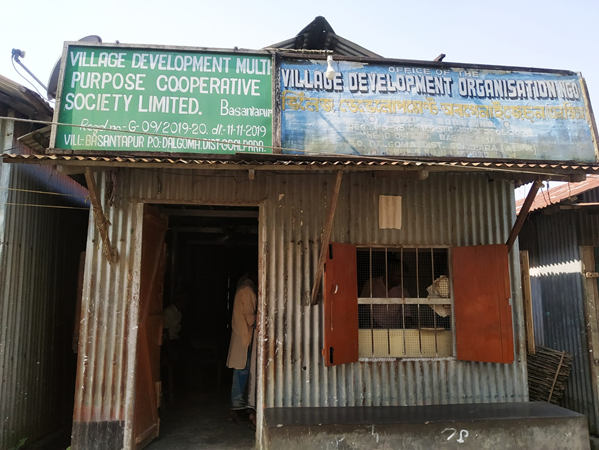
Office of the Village Development Organization.
Basantapur char is linked by land to areas that fall in other districts. Going straight from the Basantapur one can reach Kadamtala, which is in Baghbar of Barpeta district. Kadamatala has one PHC which is accessible by the people of Basantapur. However, “the PHC is often closed. The doctors take tenure transfer to this PHC and there are very few days that they turn up and after the completion of their tenure, they get transferred to another place. Moreover, this PHC has many advanced equipment, but there is none who can operate those. All the equipment will rot,” said Abdul Hamid, a local resident of Basantapur.
Read Part 1 here.
The reporter’s research was supported by a grant from Thakur Family Foundation. Thakur Family Foundation has not exercised any editorial control over the contents of this research.
Get the latest reports & analysis with people's perspective on Protests, movements & deep analytical videos, discussions of the current affairs in your Telegram app. Subscribe to NewsClick's Telegram channel & get Real-Time updates on stories, as they get published on our website.










